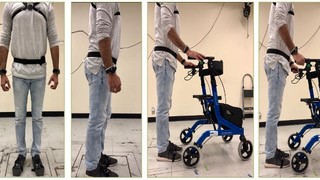
A light touch: Dr. Katherine Knox on Multiple Sclerosis research
When Dr. Katherine Knox first arrived in Saskatchewan more than two decades ago, the province covered one prescription drug for patients with multiple sclerosis.
By Researchers Under the ScopeListen to all episodes of Researchers Under the Scope podcast.
Subscribe to the podcast on Spotify or Apple Podcasts
Now, the province reimburses MS patients for 14 different drugs.
“MS is an expensive disease on many levels,” said Knox, noting Saskatchewan’s coverage has become the most favourable for MS patients anywhere in Canada.
In Saskatchewan, three in 1,000 people have Multiple Sclerosis — one of the highest incidences of Multiple Sclerosis in the world.
As treatments improve, the number of people living with this chronic autoimmune disease is rising.
“It’s probably a combination of genetic and environmental factors that play a role,” said Knox, who first learned about the disease as a student volunteer with the MS Society of Canada.
“Everyone had such a unique disease experience,” Knox said. “So I just became more curious.”
Her research today focuses on non-drug approaches which prevent nerve degeneration, and the onset of disability.
After 15 years with the disease, it’s estimated roughly half of MS patients need a cane or walking aid.
“Understandably many people don’t want to use a walker for good reason,” said Knox. “It’s bulky, it’s awkward, it certainly lets people know that you have an issue with your walking.”

To delay the need for walkers, Knox turned to researchers at the College of Kinesiology’s Biomechanics of Balance and Movement Lab, to look at the power of a ‘light touch.'
The goal is to help people with MS regain — and keep — their balance and mobility.
“Patients would tell us you know when I walk the dog and hold the leash, my balance feels better. Or when I lightly touch the back of the chair I can be re-orientated,” she said.
By teaming up with Dr. Alison Oates, fourth-year medical resident Najala Orrell, and Pawan Kumar, an engineer and kinesiology research fellow, Knox watched patients’ balance and stability improve as they used various haptic inputs.
“Even just a light touch on a walker or perhaps a different object can help them regain their balance,” said Knox.
In this episode, she said keeping her patients balanced, moving and avoiding falls is crucial.
“We do need innovation and technology to come up with ways that can provide sensory feedback that would be discreet, socially acceptable, and easy to use,” said Knox.
